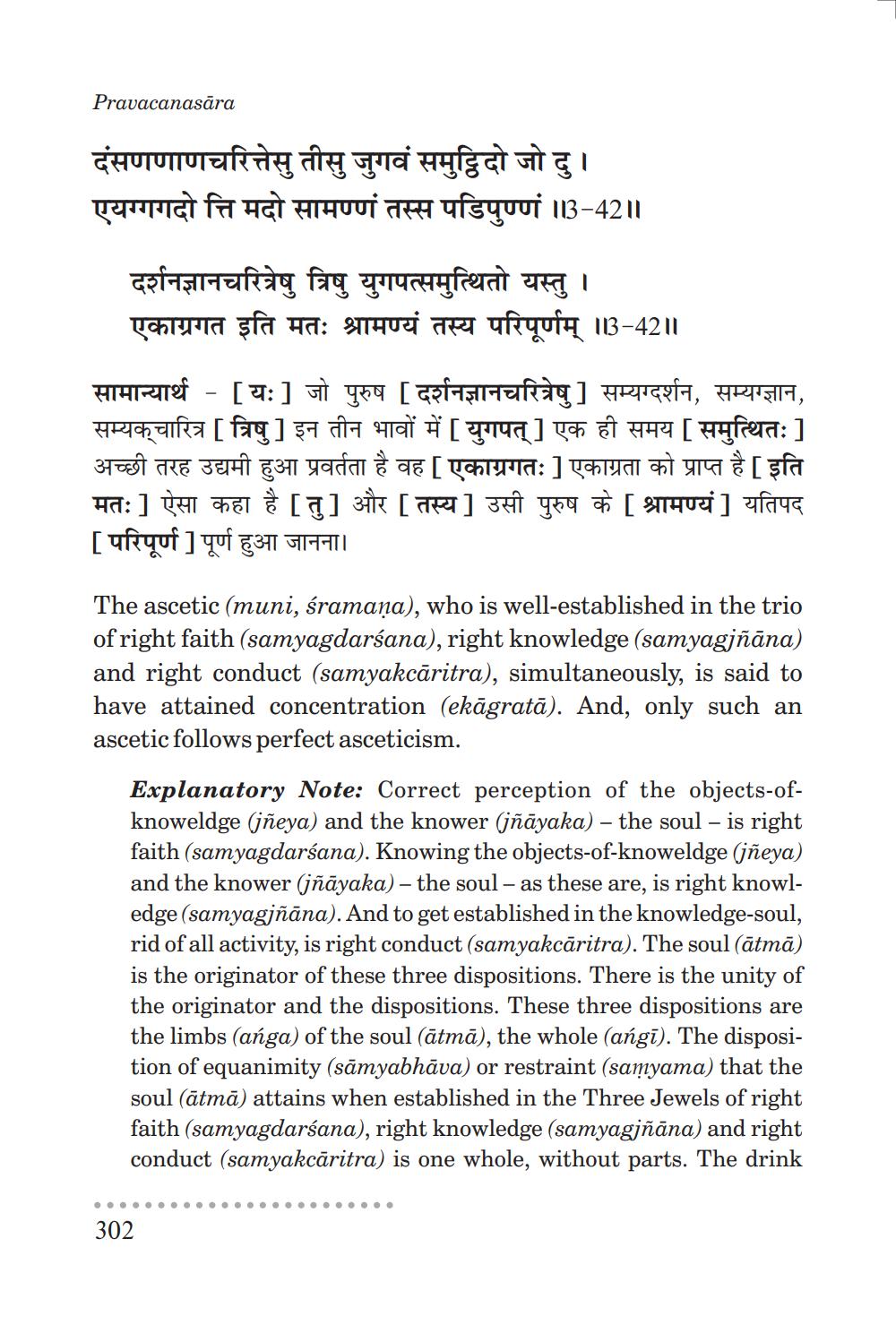________________
Pravacanasāra
दसणणाणचरित्तेसु तीसु जुगवं समुट्ठिदो जो दु। एयग्गगदो त्ति मदो सामण्णं तस्स पडिपुण्णं 3-42॥
दर्शनज्ञानचरित्रेषु त्रिषु युगपत्समुत्थितो यस्तु । एकाग्रगत इति मतः श्रामण्यं तस्य परिपूर्णम् ॥3-42॥
सामान्यार्थ - [यः] जो पुरुष [दर्शनज्ञानचरित्रेषु ] सम्यग्दर्शन, सम्यग्ज्ञान, सम्यक्चारित्र [त्रिषु ] इन तीन भावों में [युगपत् ] एक ही समय [ समुत्थितः] अच्छी तरह उद्यमी हुआ प्रवर्तता है वह [ एकाग्रगतः ] एकाग्रता को प्राप्त है [इति मतः] ऐसा कहा है [ तु] और [ तस्य ] उसी पुरुष के [ श्रामण्यं] यतिपद [ परिपूर्ण ] पूर्ण हुआ जानना।
The ascetic (muni, śramaņa), who is well-established in the trio of right faith (samyagdarśana), right knowledge (samyagjñāna) and right conduct (samyakcāritra), simultaneously, is said to have attained concentration (ekāgratā). And, only such an ascetic follows perfect asceticism.
Explanatory Note: Correct perception of the objects-ofknoweldge (jñeya) and the knower (jñāyaka) – the soul – is right faith (samyagdarśana). Knowing the objects-of-knoweldge (jñeya) and the knower (jñāyaka) – the soul - as these are, is right knowledge (samyagjñāna). And to get established in the knowledge-soul, rid of all activity, is right conduct (samyakcăritra). The soul (ātmā) is the originator of these three dispositions. There is the unity of the originator and the dispositions. These three dispositions are the limbs (anga) of the soul (ātmā), the whole (angi). The disposition of equanimity (sāmyabhāva) or restraint (samyama) that the soul (ātmā) attains when established in the Three Jewels of right faith (samyagdarśana), right knowledge (samyagjñāna) and right conduct (samyakcāritra) is one whole, without parts. The drink
302




